Quasi-Static Load Sharing Characteristics of a Planetary Gear Set with Planet Journal Bearings
Abstract
1. Introduction
2. Materials and Methods
3. Load Sharing Analysis Method
3.1. Planetary Gear Set Errors
3.2. Journal Bearing Stiffness
3.3. Load Sharing Factor
4. Results and Discussion
4.1. Fundamental Characteristics
4.2. Influence Parameters
5. Conclusions
Author Contributions
Funding
Conflicts of Interest
References
- Liu, F.; Wu, W.; Hu, J.; Yuan, S. Design of multi-range hydro-mechanical transmission using modular method. Mech. Syst. Signal Process. 2019, 126, 1–20. [Google Scholar] [CrossRef]
- Mo, S.; Zhang, Y.; Wu, Q. Load sharing behavior analysis method of wind turbine gearbox in consideration of multiple-errors. Renew. Energy 2016, 97, 481–491. [Google Scholar] [CrossRef]
- Kwon, H.S.; Kahraman, A. An assemblability check methodology for the kinematic configurations of automatic transmission planetary gear trains. J. Mech. Sci. Technol. 2016, 30, 5605–5616. [Google Scholar] [CrossRef]
- Yang, F.; Feng, J.; Du, F. Design and power flow analysis for multi-speed automatic transmission with hybrid gear trains. Int. J. Automot. Technol. 2016, 17, 629–637. [Google Scholar] [CrossRef]
- Guo, Y.; Keller, J.; LaCava, W. Planetary gear load sharing of wind turbine drivetrains subjected to non-torque loads. Wind Energy 2015, 18, 757–768. [Google Scholar] [CrossRef]
- Qiu, X.; Han, Q.; Chu, F. Load-sharing characteristics of planetary gear transmission in horizontal axis wind turbines. Mech. Mach. Theory 2015, 92, 391–406. [Google Scholar] [CrossRef]
- Masoumi, A.; Barbieri, M.; Pellicano, F.; Zippo, A.; Strozzi, M. Dynamic imbalance of high-speed planetary gears. Int. J. Cond. Monitor. 2017, 7, 2–6. [Google Scholar] [CrossRef]
- Wu, W.; Hu, C.; Hu, J.; Yuan, S. Jet cooling for rolling bearings: Flow visualization and temperature distribution. Appl. Therm. Eng. 2016, 105, 217–224. [Google Scholar] [CrossRef]
- Liu, J.; Shao, Y. A new dynamic model for vibration analysis of a ball bearing due to a localized surface defect considering edge topographies. Nonlinear Dyn. 2015, 79, 1329–1351. [Google Scholar] [CrossRef]
- Hidaka, T.; Terauchi, Y. Dynamic Behavior of Planetary Gear: 1st Report Load Distribution in Planetary Gear. Bull. JSME 1976, 19, 690–698. [Google Scholar] [CrossRef]
- Hayashi, T.; Li, X.Y.; Hayashi, I.; Watanabe, W. Measurement and some discussions on dynamic load sharing in planetary gears. Bull. JSME 1986, 29, 2290–2297. [Google Scholar] [CrossRef][Green Version]
- Kahraman, A. Load sharing characteristics of planetary transmissions. Mech. Mach. Theory 1994, 29, 1151–1165. [Google Scholar] [CrossRef]
- Kahraman, A. Static load sharing characteristics of transmission planetary gear sets: Model and experiment. SAE Tech. Paper 1999. [Google Scholar] [CrossRef]
- Kahraman, A. Natural modes of planetary gear trains. J. Sound Vib. 1994, 173, 125–130. [Google Scholar] [CrossRef]
- Kahraman, A.; Vijayakar, S. Effect of Internal Gear Flexibility on the Quasi-Static Behavior of a Planetary Gear Set. J. Mech. Design 2001, 123, 408–415. [Google Scholar] [CrossRef]
- Bodas, A.; Kahraman, A. Influence of carrier and gear manufacturing errors on the static load sharing behavior of planetary gear sets. JSME Int. J. Ser. 2004, 47, 908–915. [Google Scholar] [CrossRef]
- Singh, A. Influence of planetary needle bearings on the performance of single and double pinion planetary systems. J. Mech. Design 2007, 129, 85–94. [Google Scholar] [CrossRef]
- Fyler, D.C.; Inalpolat, M. A Dynamic Model for Double-Planet Planetary Gearsets. J. Vib. Acoust. 2016, 138, 021006. [Google Scholar] [CrossRef]
- Singh, A. Load sharing behavior in epicyclic gears: Physical explanation and generalized formulation. Mech. Mach. Theory 2010, 45, 511–530. [Google Scholar] [CrossRef]
- Singh, A. Epicyclic load sharing map—Development and validation. Mech Mach. Theory 2011, 46, 632–646. [Google Scholar] [CrossRef]
- Montestruc, A.N. Influence of planet pin stiffness on load sharing in planetary gear drives. J. Mech. Design 2011, 133, 014501. [Google Scholar] [CrossRef]
- Gu, X.; Velex, P. A dynamic model to study the influence of planet position errors in planetary gears. J. Sound Vib. 2012, 331, 4554–4574. [Google Scholar] [CrossRef]
- Wen, S.Z. Tribology Theory; Publishing Company of Tisinghua University: Beijing, China, 1991. [Google Scholar]
- Yu, R.; Chen, W.; Li, P. The analysis of elastohydrodynamic lubrication in the textured journal bearing. Proc. Int. Mech. Eng. J. 2016, 230, 1197–1208. [Google Scholar] [CrossRef]
- Ren, F.; Luo, G.; Shi, G.; Wu, X.; Wang, N. Influence of manufacturing errors on dynamic floating characteristics for herringbone planetary gears. Nonlinear Dyn. 2018, 93, 361–372. [Google Scholar] [CrossRef]
- Zhai, H.; Zhu, C.; Song, C.; Liu, H.; Bai, H. Influences of carrier assembly errors on the dynamic characteristics for wind turbine gearbox. Mech. Mach. Theory 2016, 103, 138–147. [Google Scholar] [CrossRef]
- Hu, Y.; Talbot, D.; Kahraman, A. A Load Distribution Model for Planetary Gear Sets. J. Mech. Design 2018, 140, 053302. [Google Scholar] [CrossRef]
- Ligata, H.; Kahraman, A.; Singh, A. A closed-form planet load sharing formulation for planetary gear sets using a translational analogy. J. Mech. Design 2009, 131, 021007. [Google Scholar] [CrossRef]
- Xiao, T.; Yuan, S. Analysis on the performance of load sharing mechanism by oil film floated in planetary gear. Chin. J. Mech. Eng. 1993, 29, 75–81. [Google Scholar]
- Ligata, H.; Kahraman, A.; Singh, A. An Experimental Study of the Influence of Manufacturing Errors on the Planetary Gear Stresses and Planet Load Sharing. ASME J. Mech. Des. 2008, 130, 041701. [Google Scholar] [CrossRef]
- Iglesias, M.; del Rincon, A.F.; de-Juan, A.; Garcia, P.; Diez-Ibarbia, A.; Viadero, F. Planetary transmission load sharing: Manufacturing errors and system configuration study. Mech. Mach. Theory 2017, 111, 21–38. [Google Scholar] [CrossRef]
- Zhang, H.; Wu, S.; Peng, Z. A nonlinear dynamic model for analysis of the combined influences of nonlinear internal excitations on the load sharing behavior of a compound planetary gear set. Proc. Int. Mech. Eng. Part C 2016, 230, 1048–1068. [Google Scholar] [CrossRef]
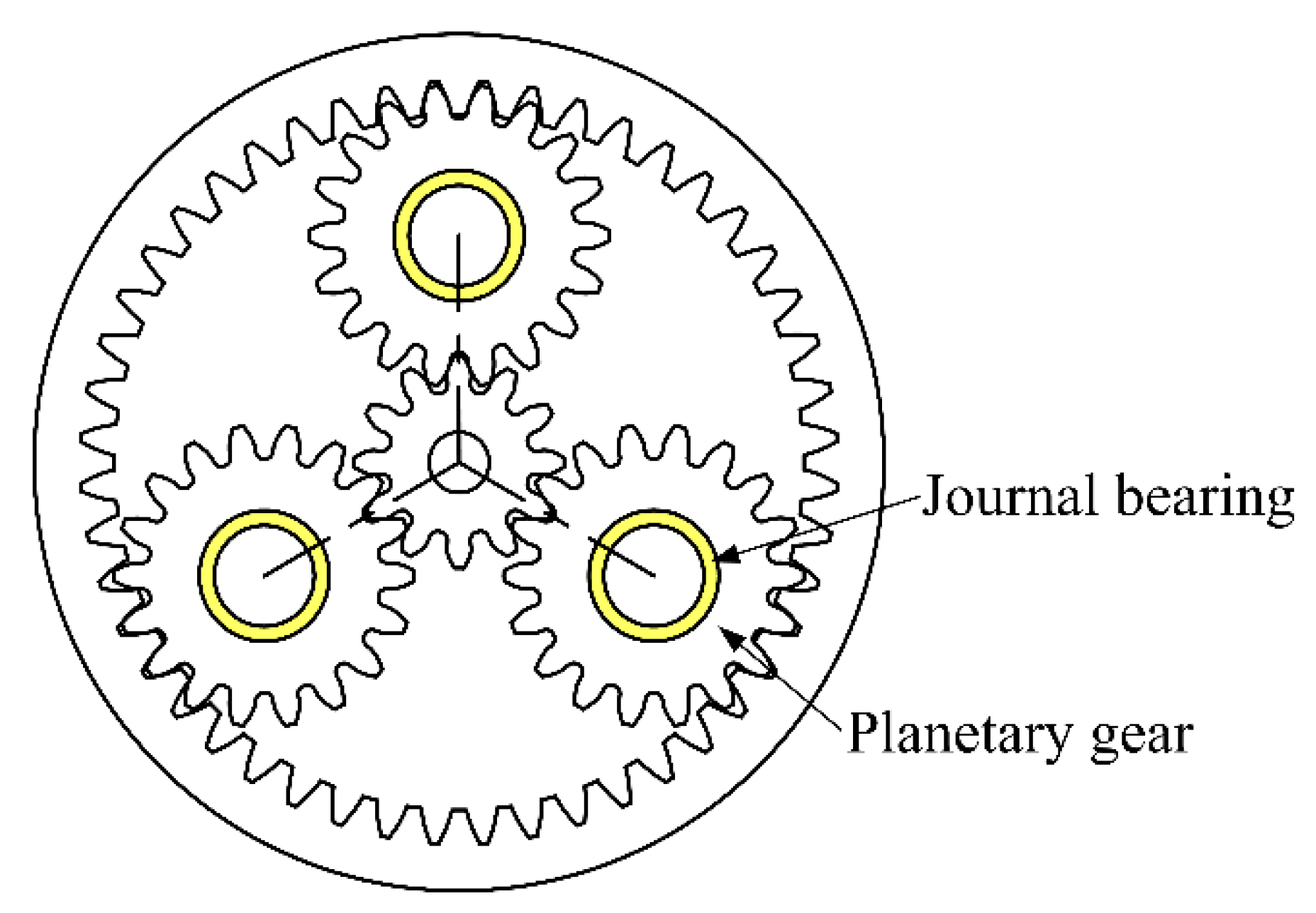
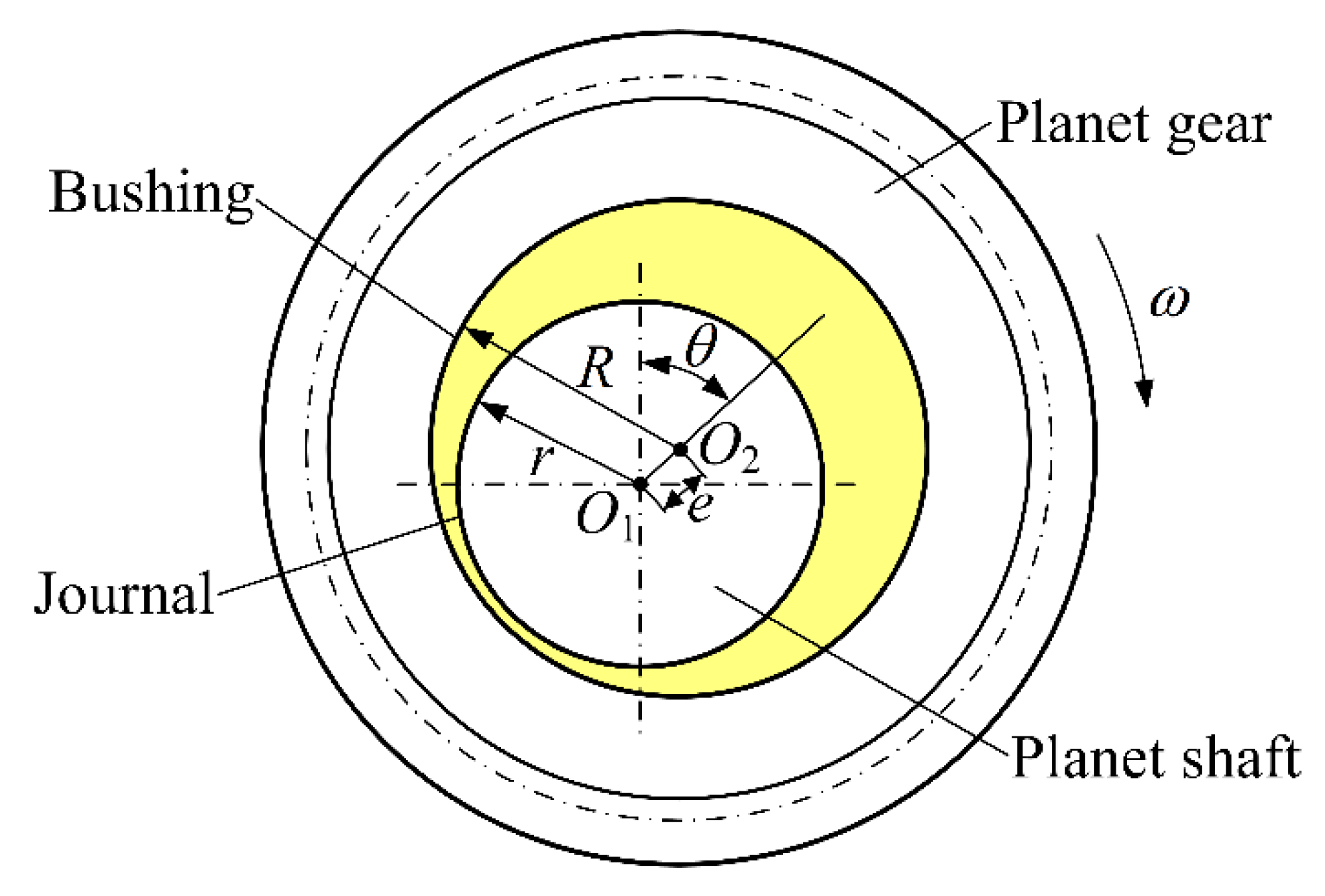
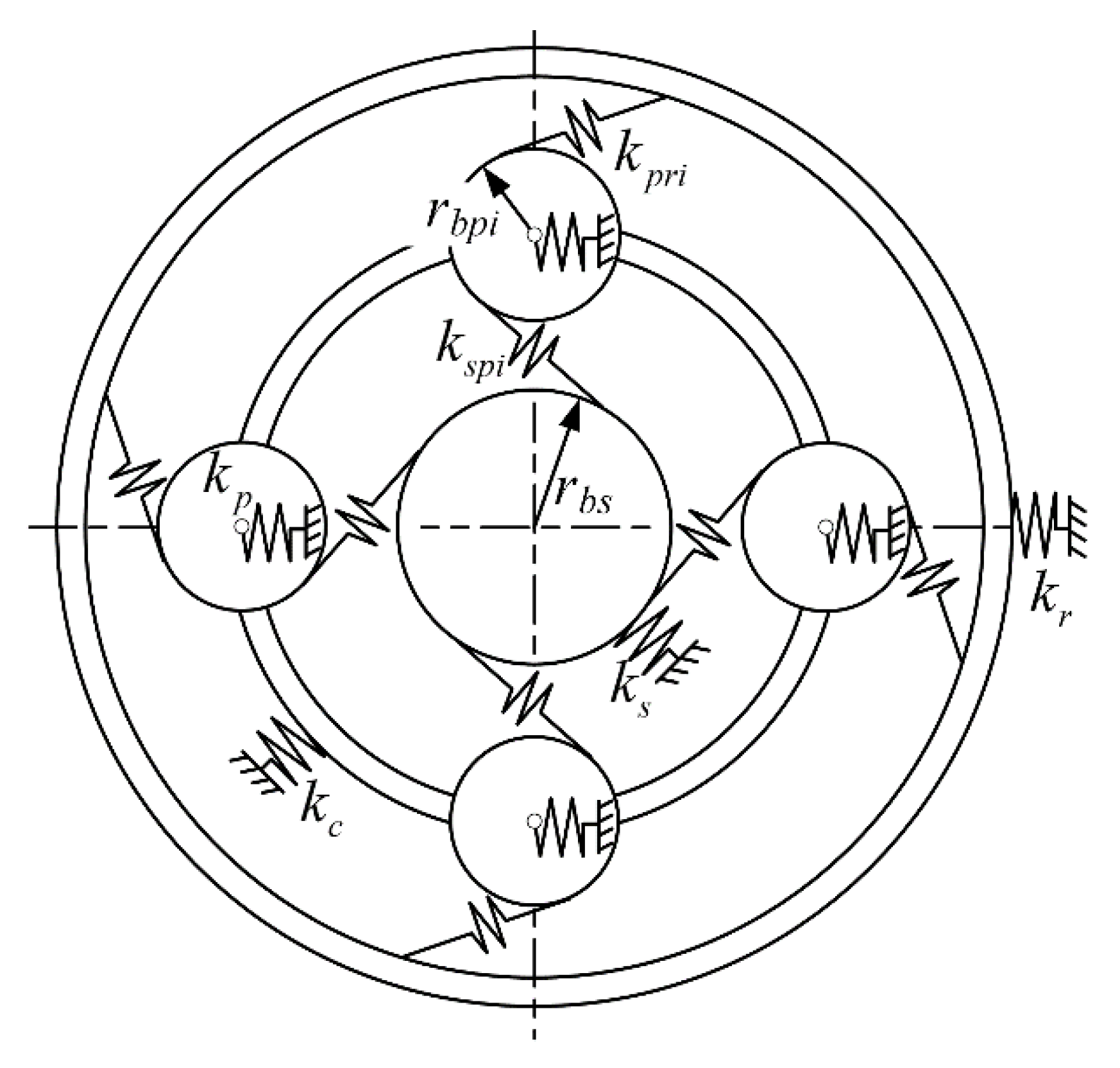
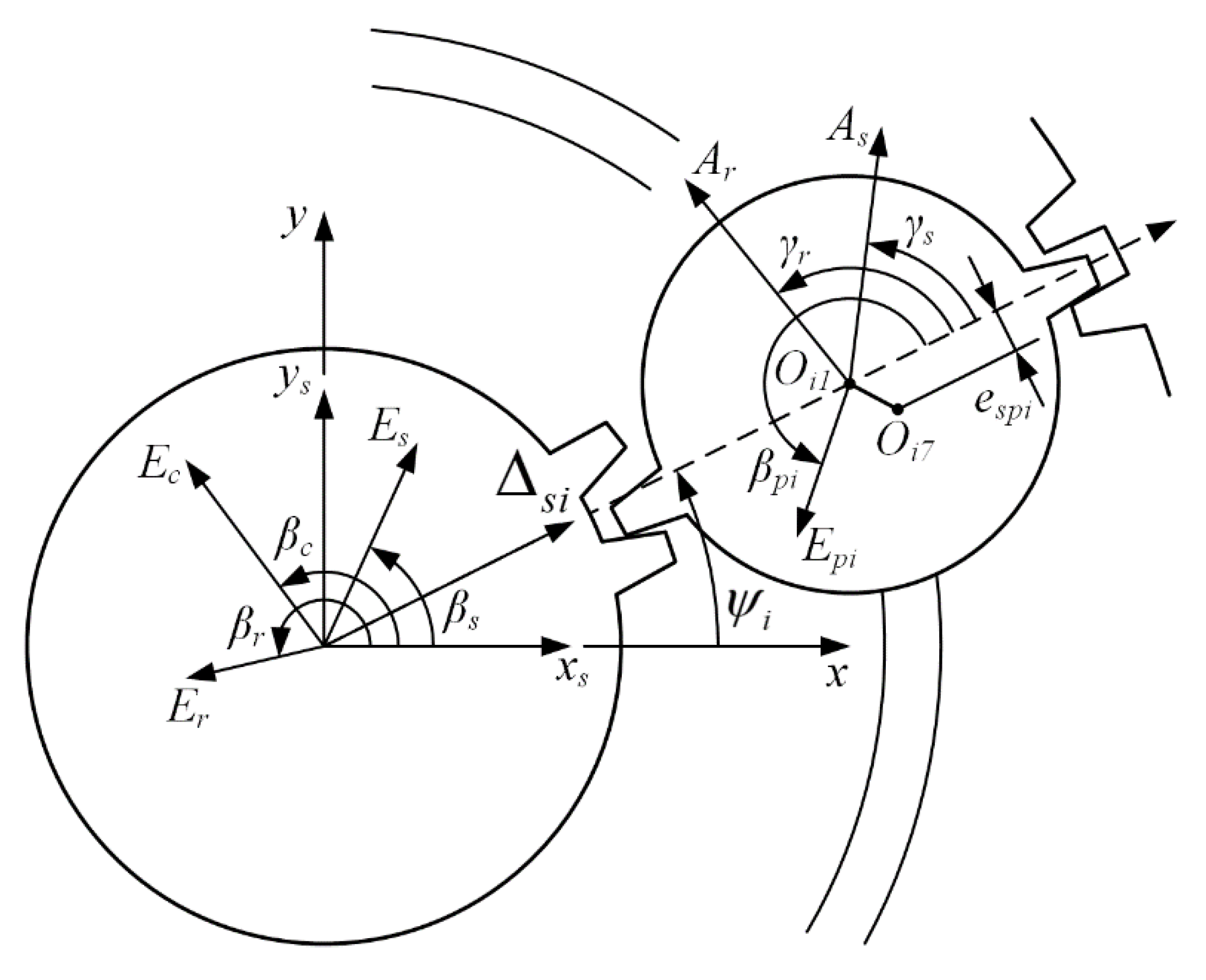
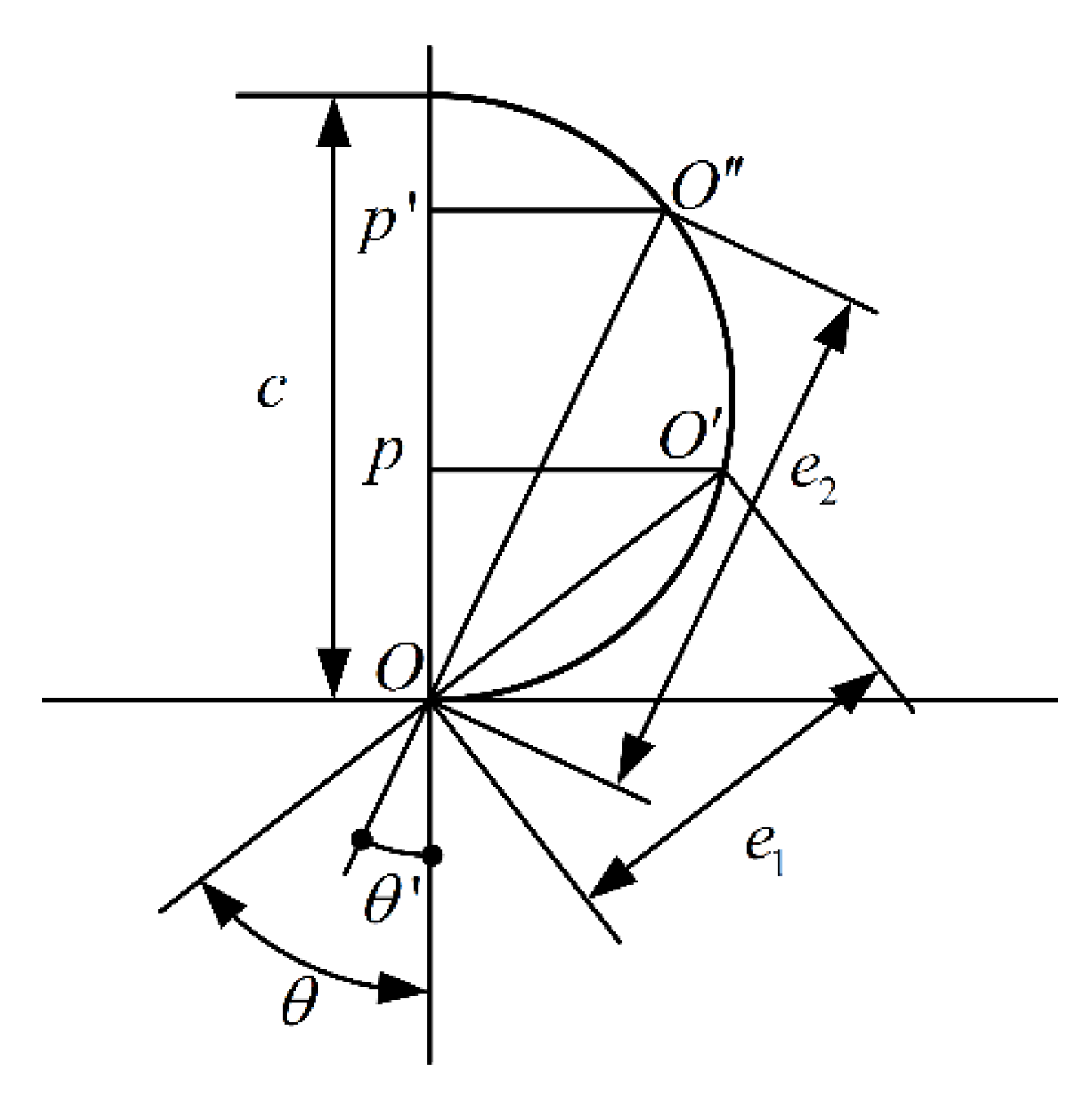
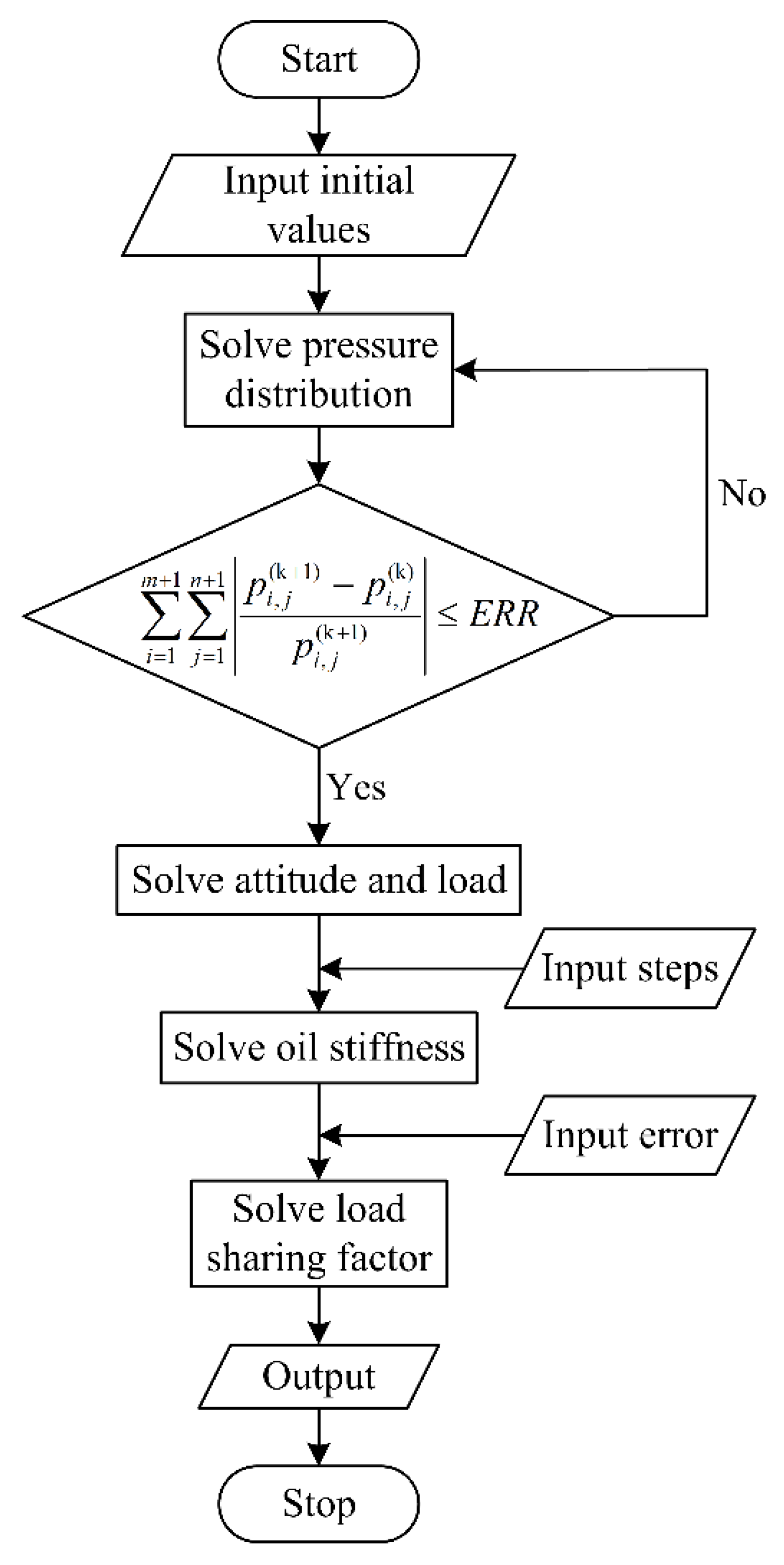

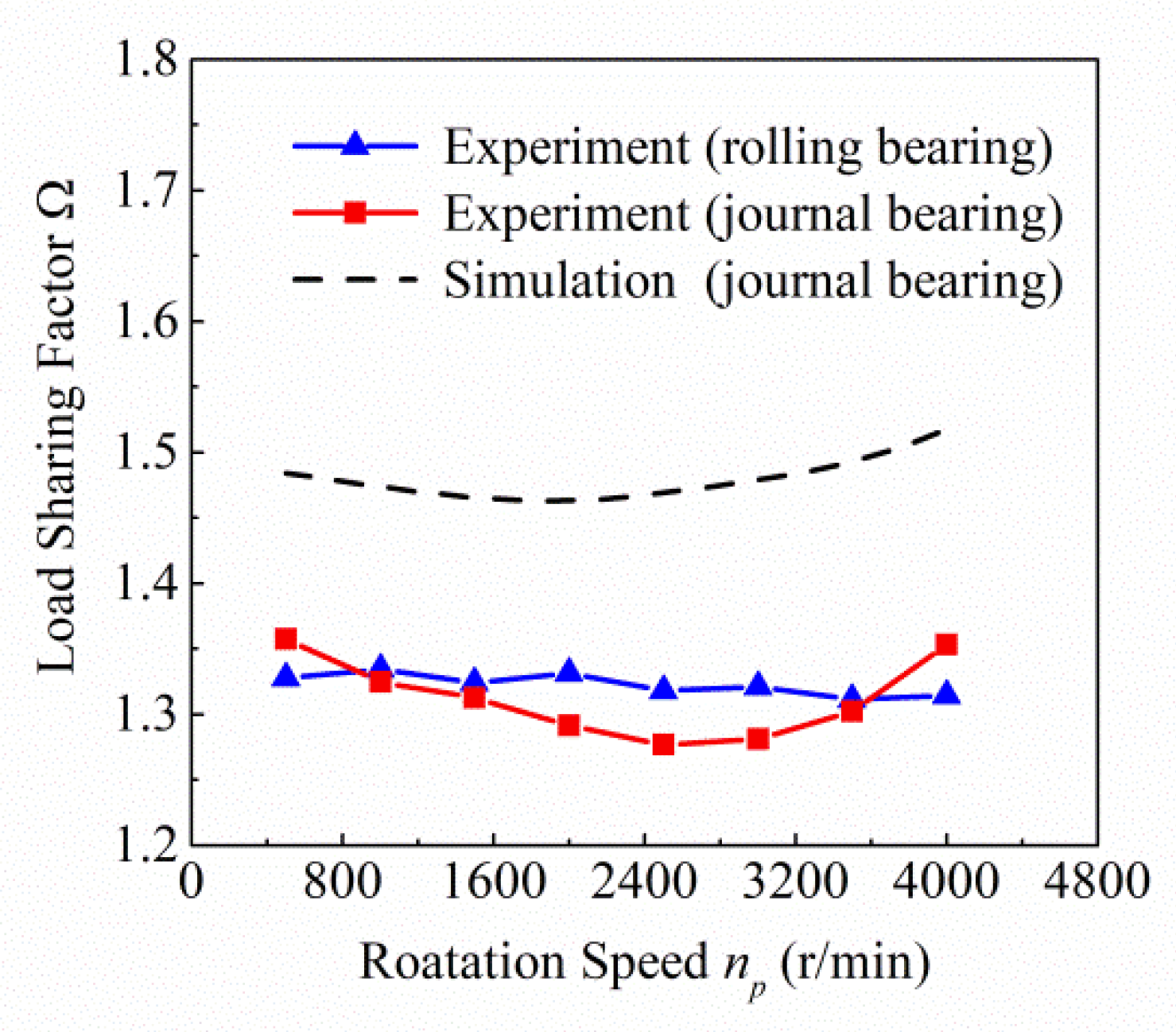

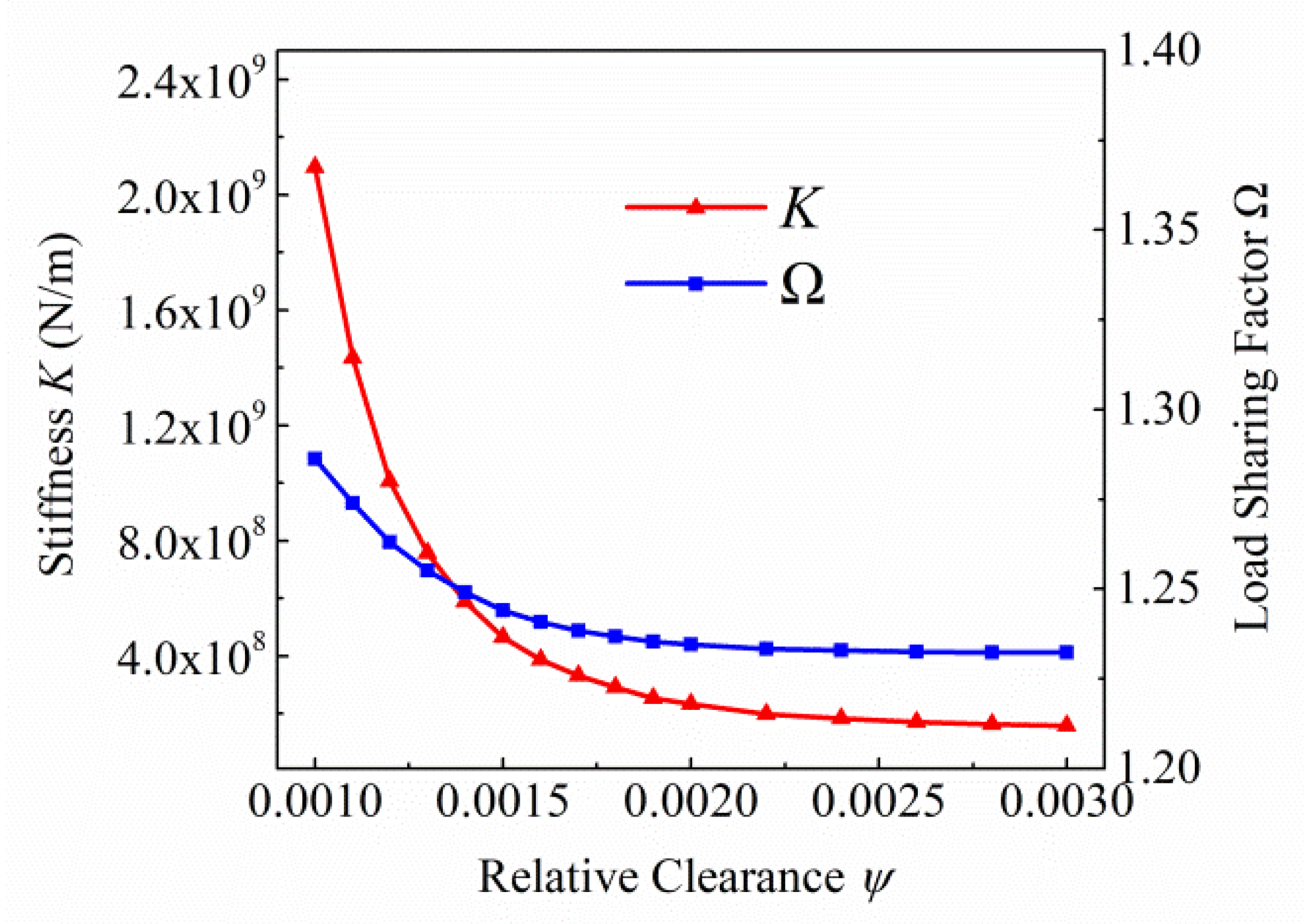
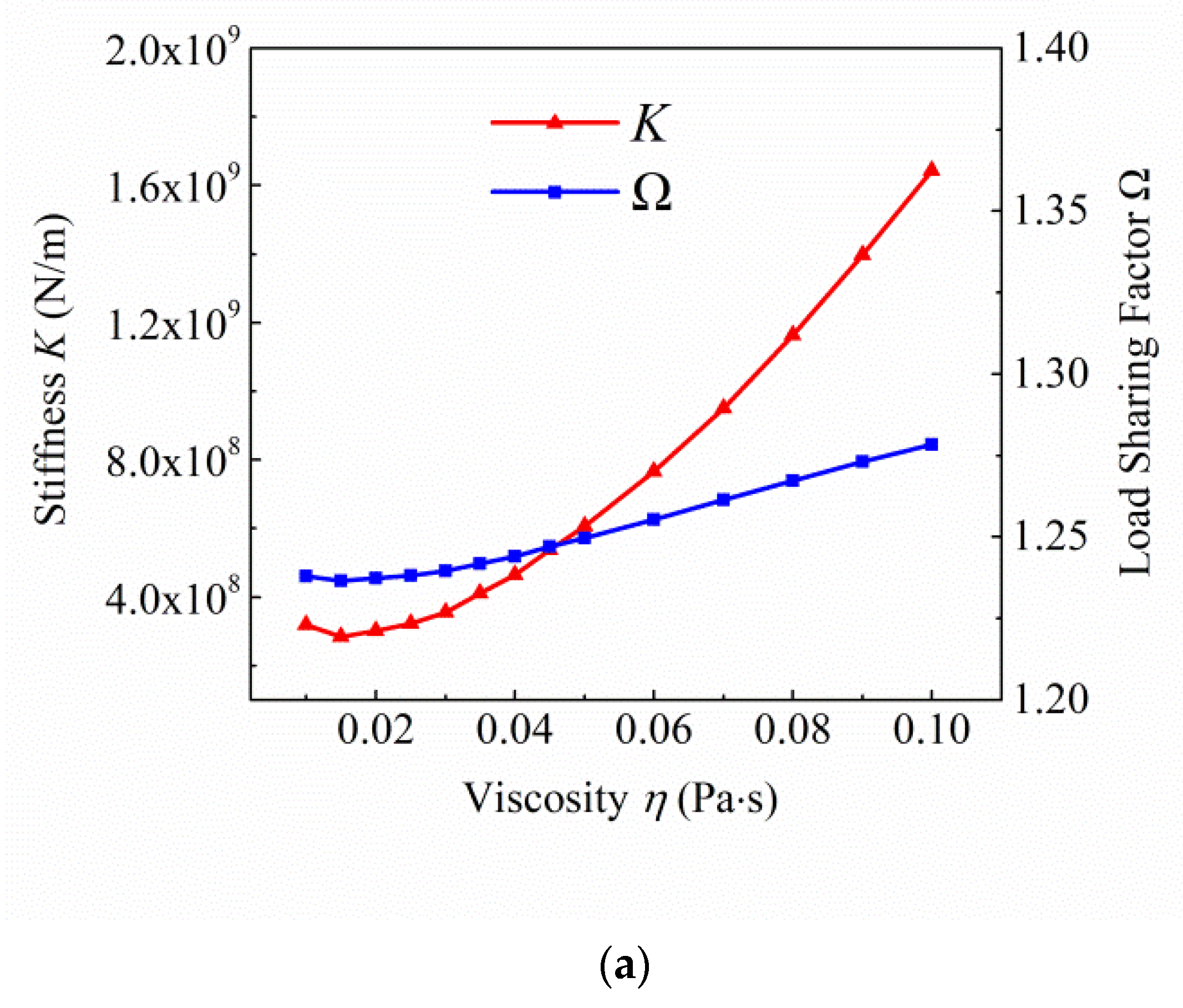
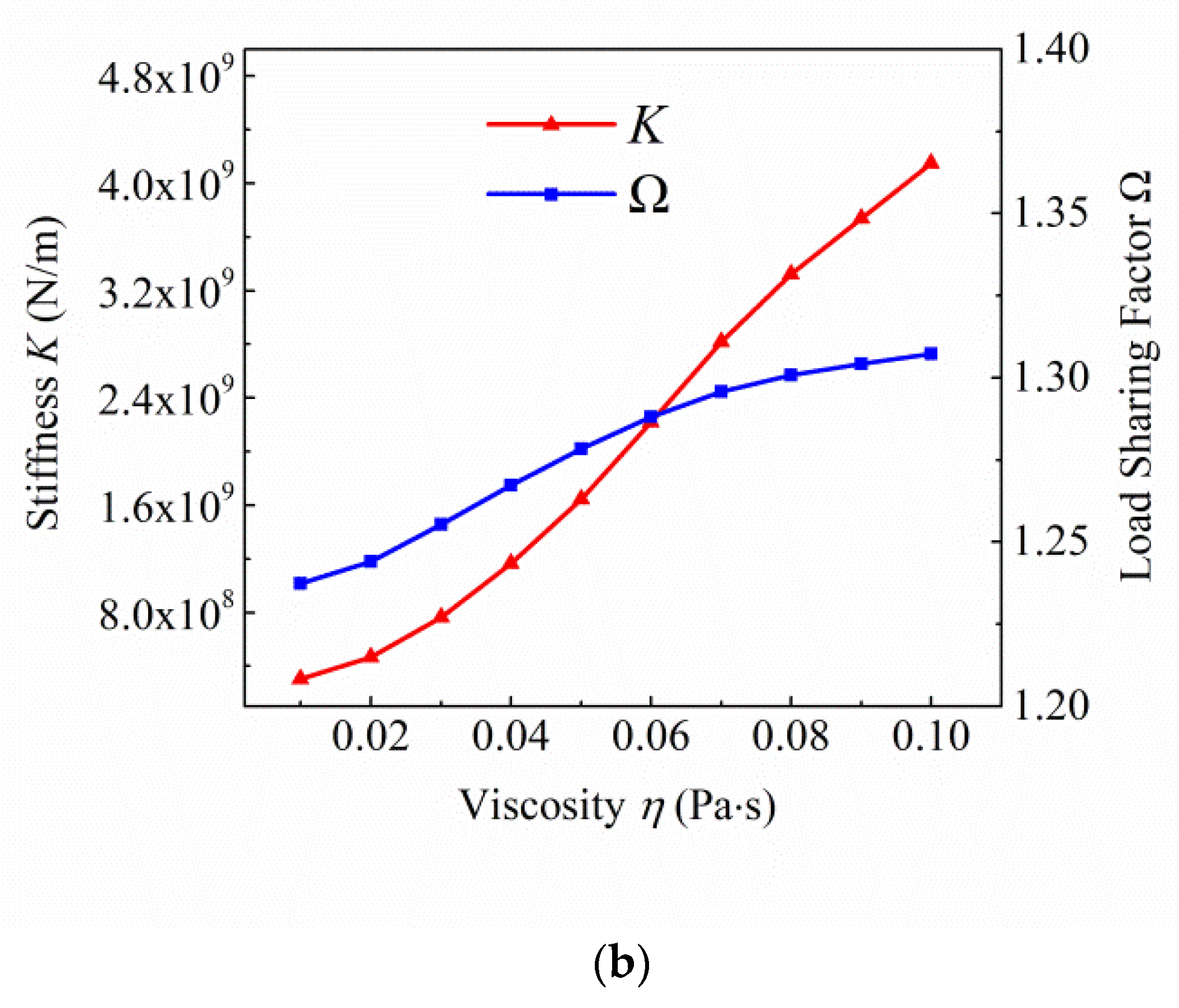
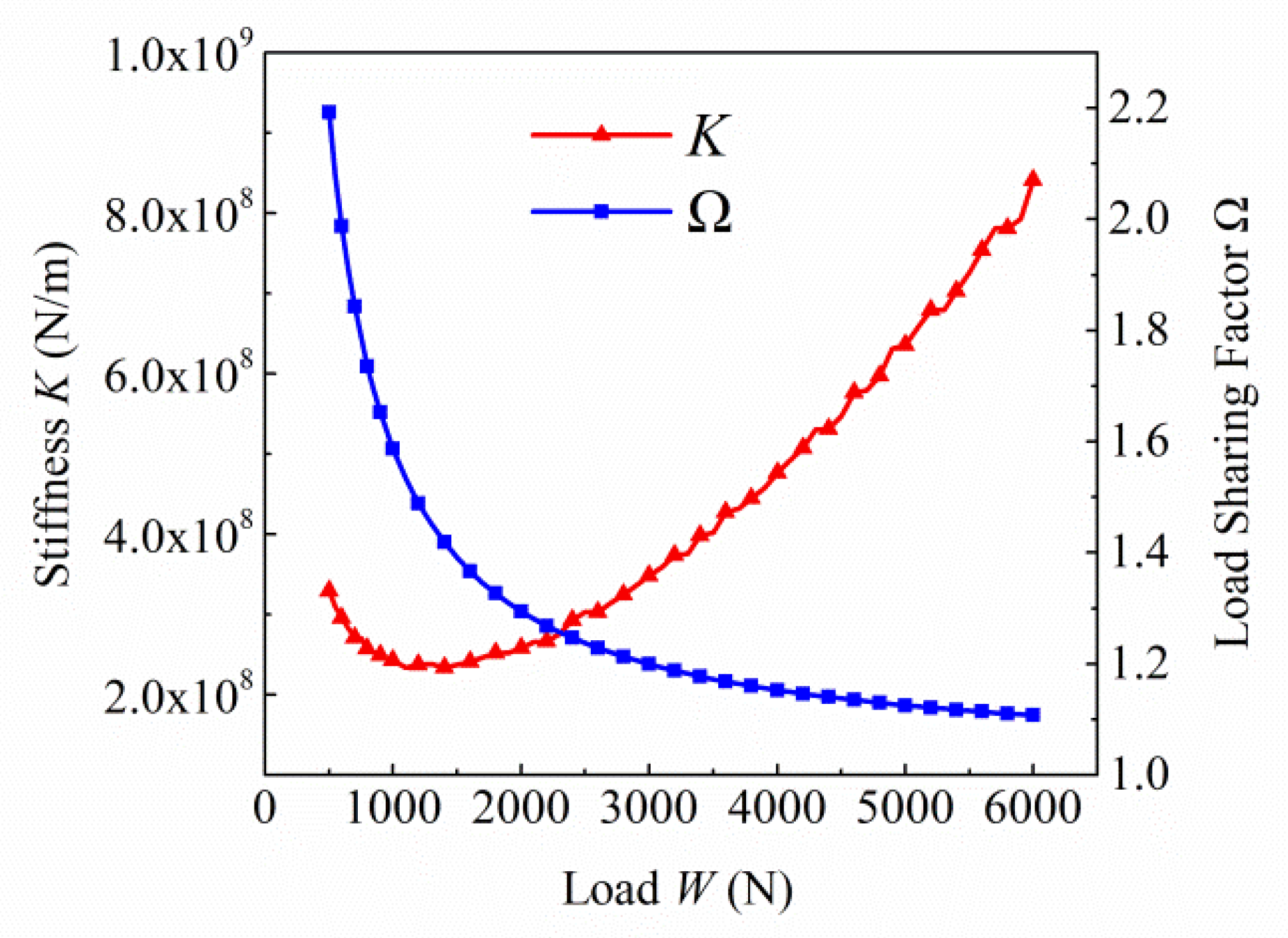
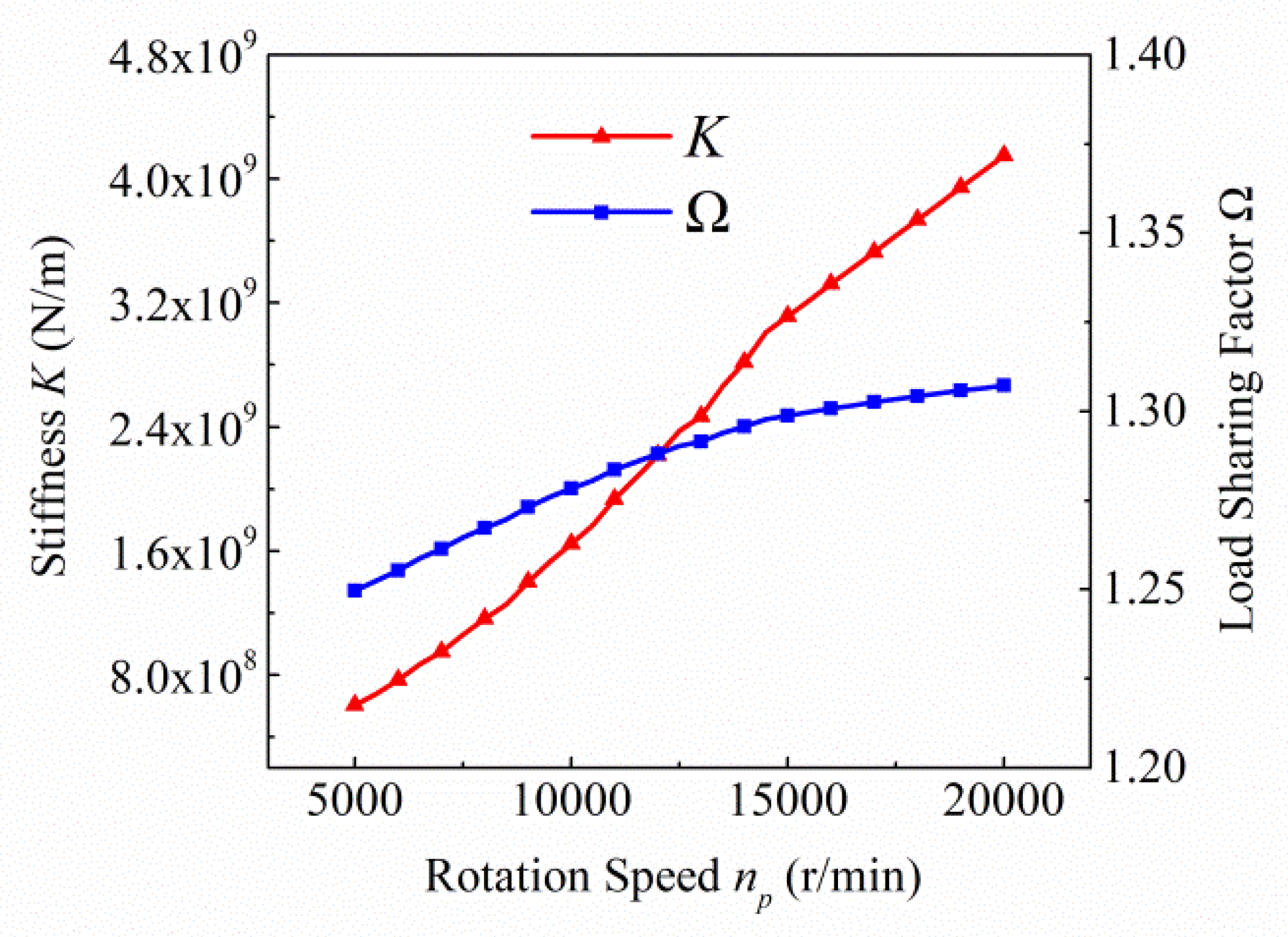
| Parameter | Sun | Planet | Ring |
|---|---|---|---|
| Number of planets | - | 4 | - |
| Number of teeth | 48 | 30 | 108 |
| Normal module | 1 | 1 | 1 |
| Pressure angle (°) | 20 | 20 | 20 |
| Helix angle (°) | 20 | 20 | 20 |
| Center distance (mm) | 39 | 39 | |
| Component | Parameter | Value |
|---|---|---|
| sun | βs | 3° |
| planet | βpi | 2°/1°/1.5°/1.5° |
| carrier | βc | 9° |
| ring | βr | 1.8° |
| sun | γs | 6° |
| ring | γr | 3.6° |
| gear | αw | 20° |
© 2020 by the authors. Licensee MDPI, Basel, Switzerland. This article is an open access article distributed under the terms and conditions of the Creative Commons Attribution (CC BY) license (http://creativecommons.org/licenses/by/4.0/).
Share and Cite
Guo, Z.; Li, S.; Wu, W.; Zhang, L. Quasi-Static Load Sharing Characteristics of a Planetary Gear Set with Planet Journal Bearings. Appl. Sci. 2020, 10, 1113. https://doi.org/10.3390/app10031113
Guo Z, Li S, Wu W, Zhang L. Quasi-Static Load Sharing Characteristics of a Planetary Gear Set with Planet Journal Bearings. Applied Sciences. 2020; 10(3):1113. https://doi.org/10.3390/app10031113
Chicago/Turabian StyleGuo, Zhiqiang, Shenlong Li, Wei Wu, and Liuyang Zhang. 2020. "Quasi-Static Load Sharing Characteristics of a Planetary Gear Set with Planet Journal Bearings" Applied Sciences 10, no. 3: 1113. https://doi.org/10.3390/app10031113
APA StyleGuo, Z., Li, S., Wu, W., & Zhang, L. (2020). Quasi-Static Load Sharing Characteristics of a Planetary Gear Set with Planet Journal Bearings. Applied Sciences, 10(3), 1113. https://doi.org/10.3390/app10031113




